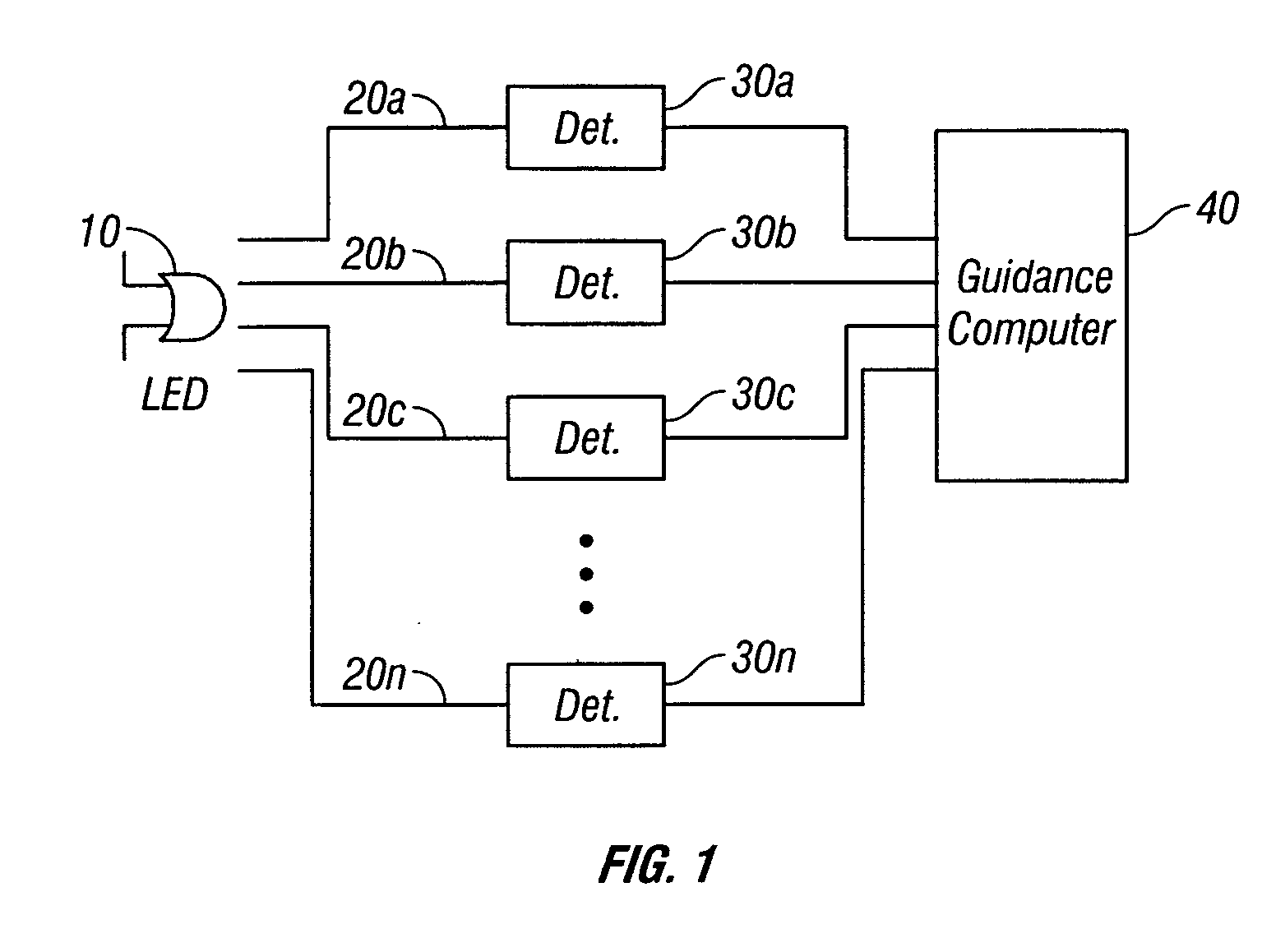On-board light source based gain correction for semi-active laser seekers
a laser seeker and gain correction technology, applied in the direction of instruments, instruments for comonautical navigation, optical radiation measurement, etc., can solve the problems of navigation errors, inability to uniformize the gain or responsivity of detectors, etc., to accurately locate the target direction, improve the accuracy and linearity of the sals, and improve the accuracy and linearity.
- Summary
- Abstract
- Description
- Claims
- Application Information
AI Technical Summary
Benefits of technology
Problems solved by technology
Method used
Image
Examples
Embodiment Construction
[0012]FIG. 1 shows a block diagram of one embodiment to the invention. In this embodiment the OBLS is an LED 10 which is used to calibrate the responsivity of the detectors. The calibration LED 10 is preferably mounted inside the missile, where it radiates light energy onto a plurality of optical fibers 20a-20n. FIG. 3 depicts the seeker electronics section 12 of a missile according to an embodiment of the invention. In this embodiment, the calibration LED 10 is mounted in the detector board 18 of the seeker electronics 12. Also mounted on the detector board 18 are seven avalanche photodiodes (“APD”) 14, which receive the incoming laser radiation from an external laser designator as well as light from the calibration LED 10. The missile is also provided with back lens plates 16, which contain lenses 15. In one particularly advantageous embodiment the lenses molded into the lens plates for durability. The missile's optical system also includes a front lens plate (not shown), which re...
PUM
 Login to View More
Login to View More Abstract
Description
Claims
Application Information
 Login to View More
Login to View More - R&D
- Intellectual Property
- Life Sciences
- Materials
- Tech Scout
- Unparalleled Data Quality
- Higher Quality Content
- 60% Fewer Hallucinations
Browse by: Latest US Patents, China's latest patents, Technical Efficacy Thesaurus, Application Domain, Technology Topic, Popular Technical Reports.
© 2025 PatSnap. All rights reserved.Legal|Privacy policy|Modern Slavery Act Transparency Statement|Sitemap|About US| Contact US: help@patsnap.com



